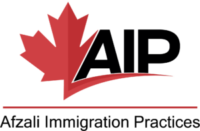Canadian Political Structure
History of the Canadian Political Structure
Prior to 1982, only the British government had the power to amend Canada’s constitution, but since 1982, with the inclusion of the Canadian Charter of Rights and Freedoms in the Constitution, Canada has been empowered by its own constitution which established mechanisms for agreement between the federal government and the nine provinces with a view to reform. Despite these changes, Canada remained a constitutional monarchy, and the Queen of England, Elizabeth II, remained Queen of Canada.
Canadian Political Division
In Canada, there are three levels of government authorities that have different responsibilities:
- Federal Government (Principal Government of Canada)
- Provincial and territorial governments
- Urban governments (local)
Federal Government of Canada
The federal government has the authority of overseeing general affairs and major decisions, such as foreign and military policy. These tasks include tackling crime and trafficking, budget, armed forces, health and agriculture, international trades, communications and environment. The formation of the federal government depends on the House of Commons, whose members are elected by the people. Thus, if a party can win 151 seats in the House of Commons, it can form the entire government. Otherwise, members of other parties are also used.
The prime minister has the most power in the Canadian government, with 25 ministers in the prime minister’s cabinet. The prime minister elects his ministers and they are nominated for the federal government. The federal government has a duty to regulate the budgets of the provinces, in which the rich provinces’ budgets are given to the poor provinces in order to establish equality. The Governor-General, elected by the Queen, also oversees the work of the House of Commons.
Provincial and Territorial Governments
Regional Authorities
Political Parties in Canada
The political party with the largest number of members of parliament forms the government and its leader is the prime minister. There are currently six political parties represented in the House of Commons. A party must be able to have 12 elected members to become official and qualify for certain conditions, such as budget.
The three official Canadian political parties are:
– The Liberal Party of Canada (the current majority party and government of Canada led by Justin Trudeau)
- Conservative Party of Canada
- New Democratic Party
Elections in Canada
Federal elections are held every 5 years. Provincial and municipal elections are also held every 4 years. To be eligible for federal, provincial, and municipal elections, individuals must:
- Be a Canadian citizen
- 18 years old or older
- The names of the people should be registered as voter in the elections


